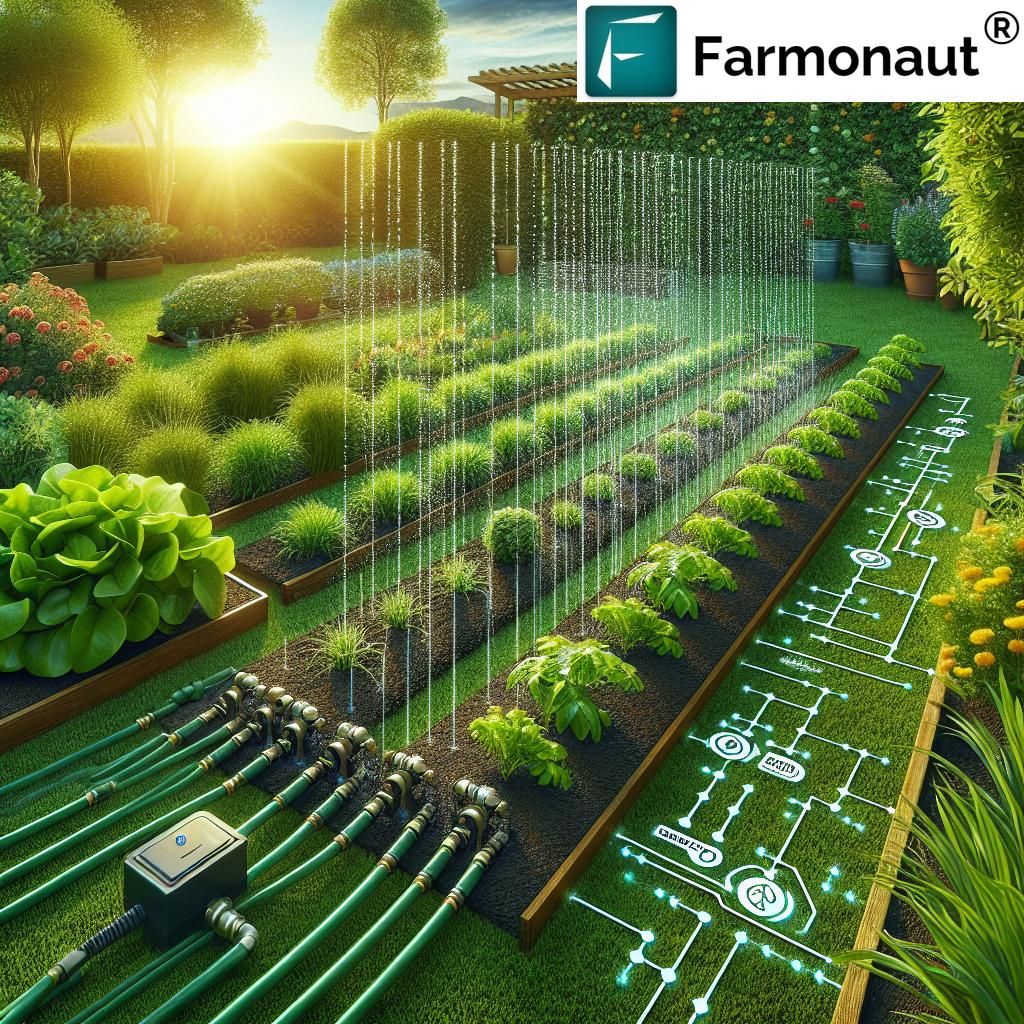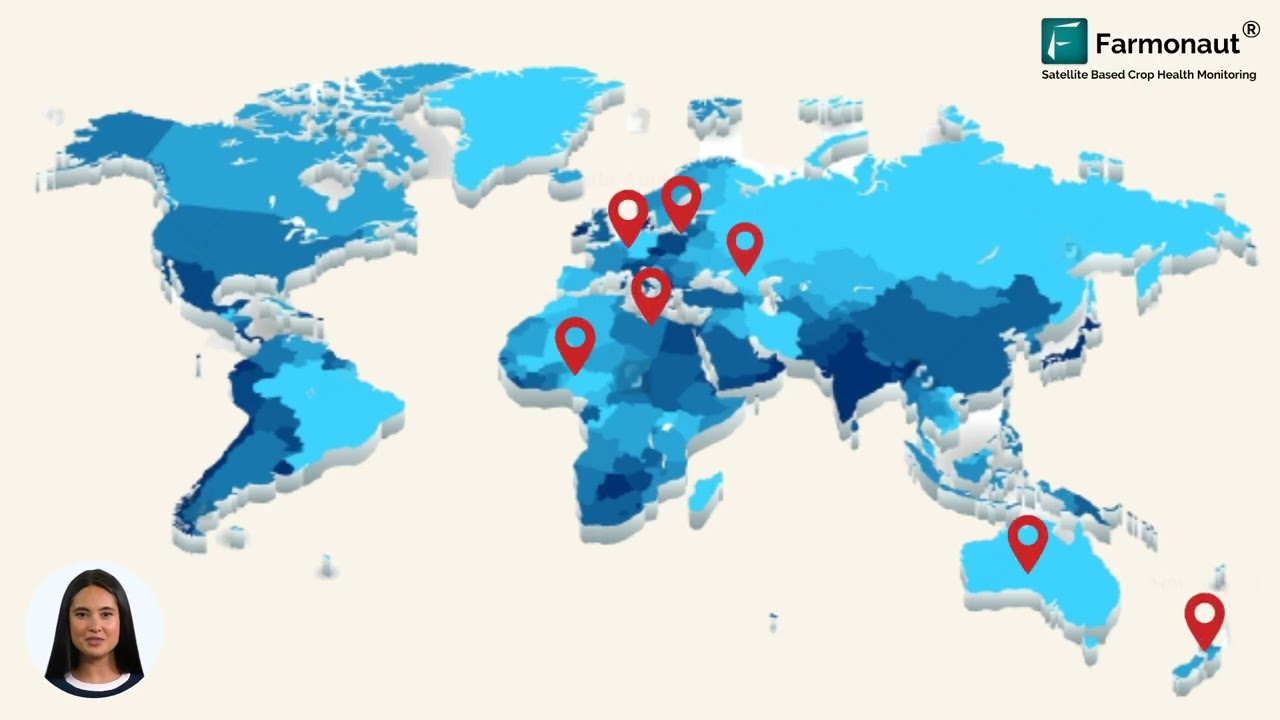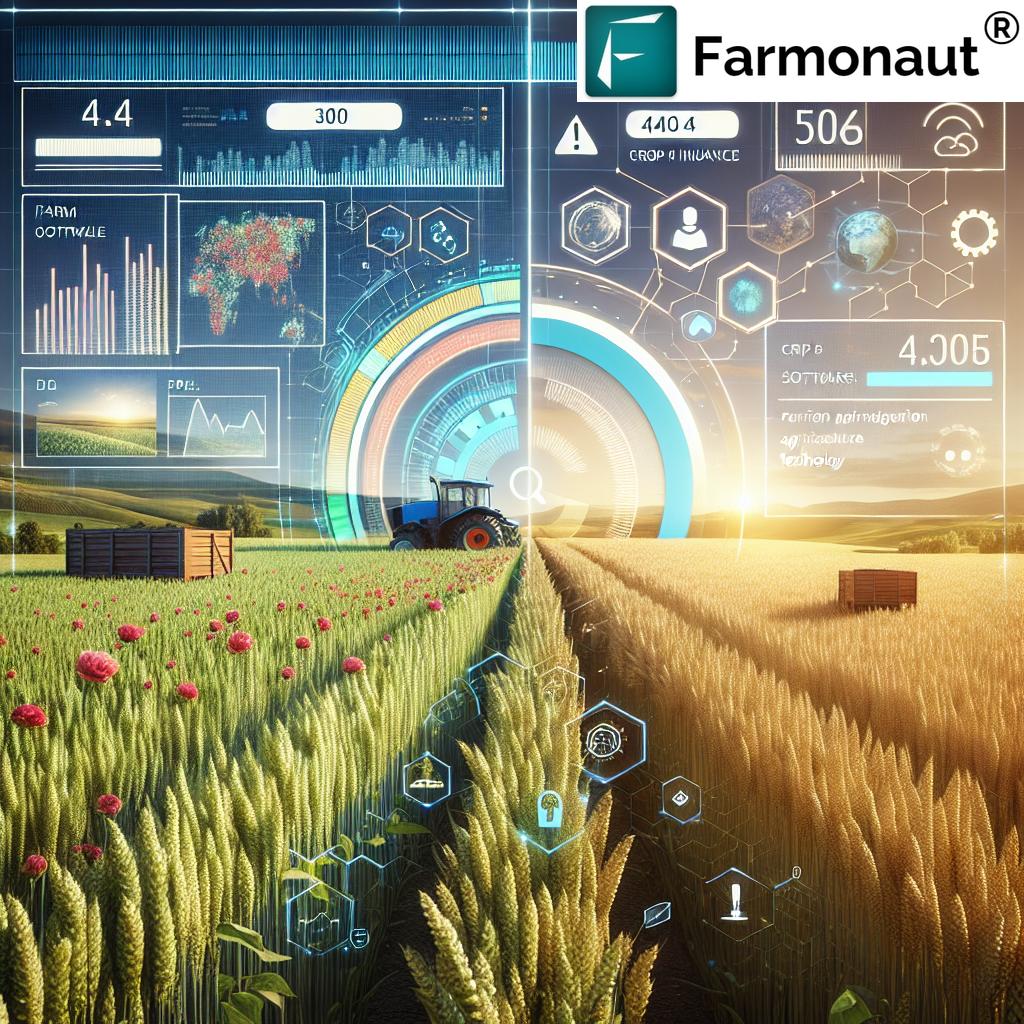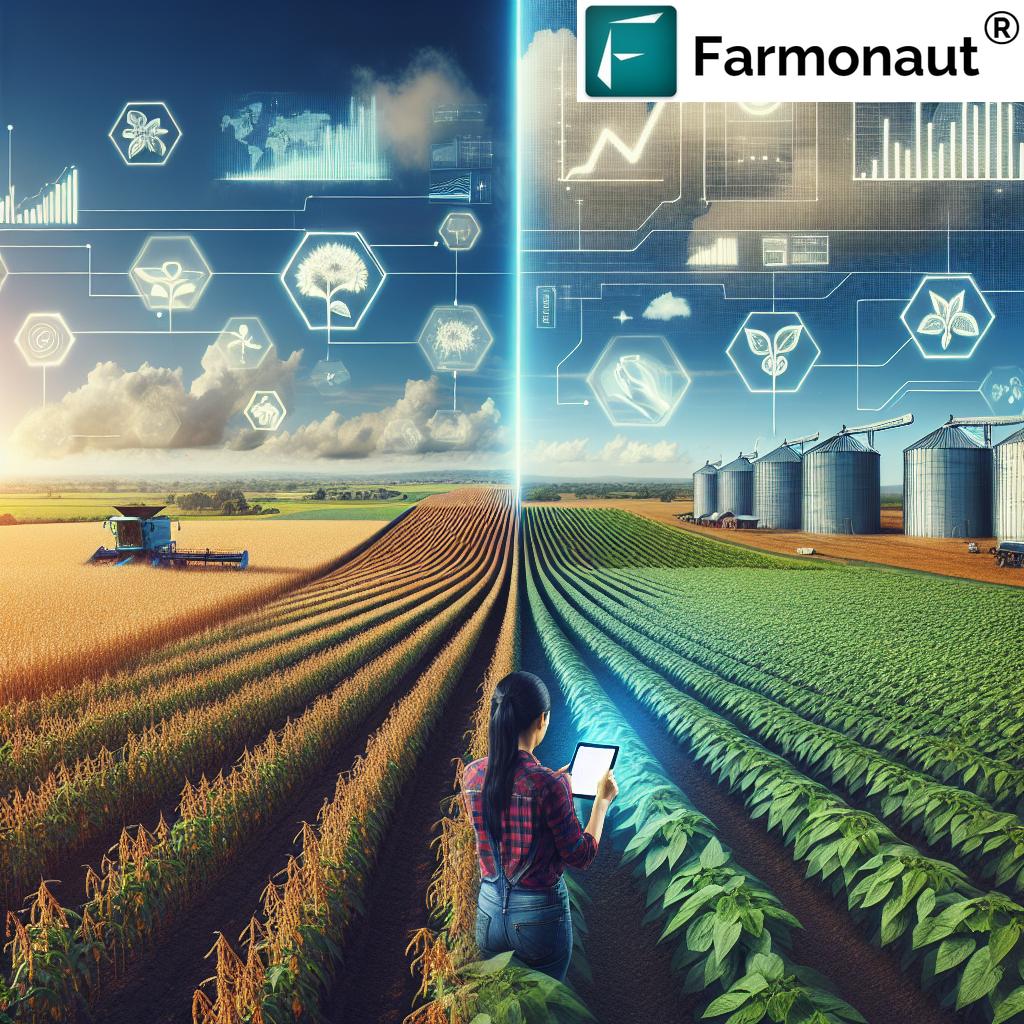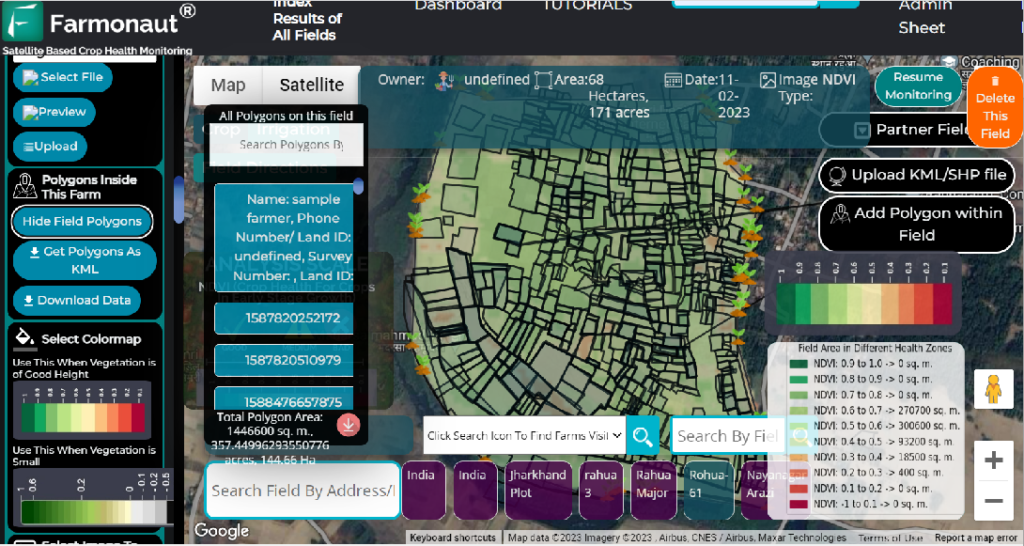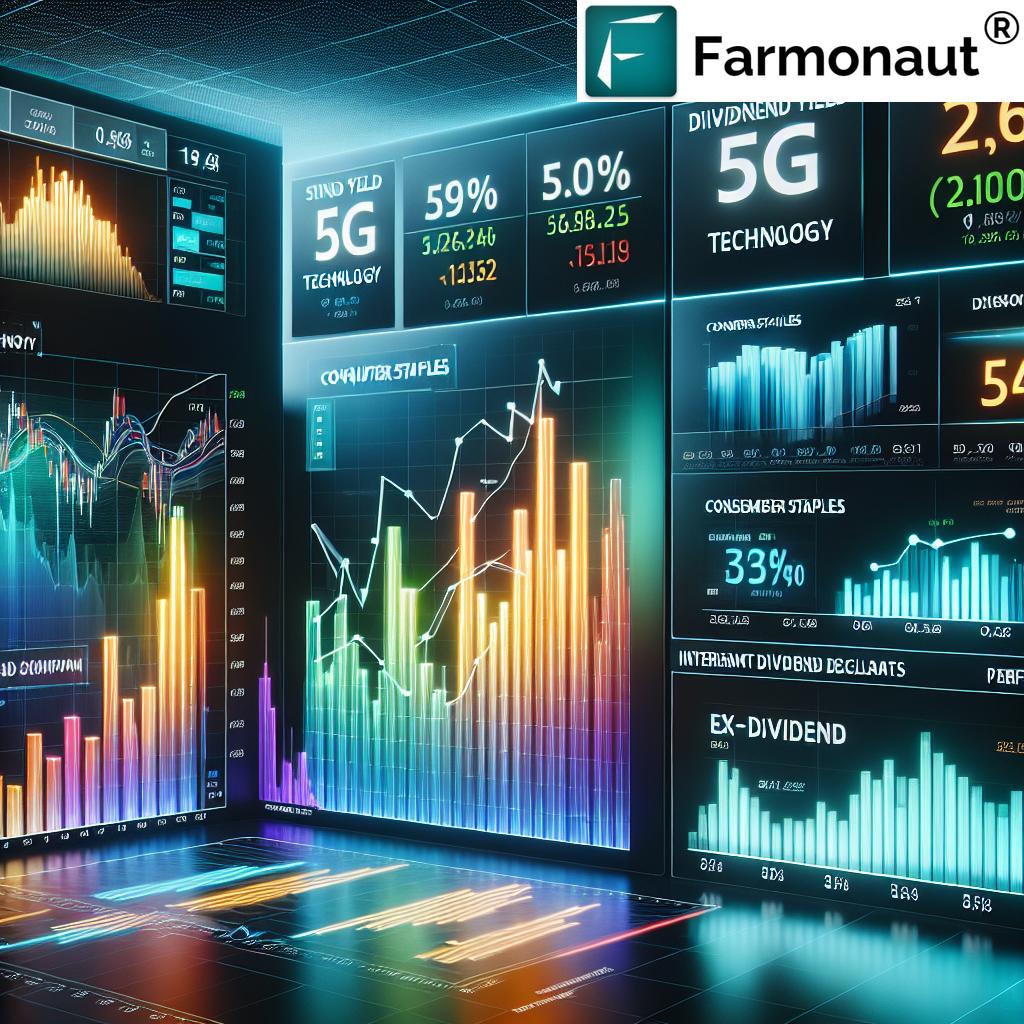Garden Irrigation System: 7 Hacks for Lush Plants!
Table of Contents
- Why Garden Irrigation Systems Are Essential
- Types of Garden Irrigation Systems
- Comparison Table of Top Irrigation Systems
- Key Components of Irrigation Systems
- Environmental Sustainability in Garden Irrigation
- Smart Irrigation Technology & Innovations
- How Farmonaut Empowers Smart Irrigation
- Garden Irrigation System: 7 Expert Hacks for Lush Plants
- Irrigation Management Best Practices
- FAQs: Garden Irrigation System
- Conclusion
Why Garden Irrigation Systems Are Essential
In regions where rainfall is insufficient or unpredictable, ensuring that our plants receive adequate moisture for healthy growth becomes a challenge. That’s why garden irrigation systems are essential—they deliver water directly to the root zones, promoting optimal development and maximized yields. From home gardens to commercial agriculture, efficient irrigation methods offer resource conservation, plant health, and sustainability benefits crucial for modern farming and forestry.
With the integration of advanced technologies such as soil moisture sensors and smart irrigation controllers, we can now address water usage, reduce evaporation and runoff, and foster environmental sustainability in farming. Let’s dive into the world of irrigation—exploring types, components, innovations, and expert hacks to transform our gardens into lush, thriving spaces!
Types of Garden Irrigation Systems: Finding the Fit for Your Plants
Let’s examine the main types of irrigation systems used in gardens and agriculture. Choosing the right system can drastically improve water conservation and plant health in our spaces, from orchards and row crops to greenhouse beds and vineyards.
1. Drip Irrigation Systems
- How it works: Delivers water directly to the root zone through a network of valves, pipes, tubing, and emitters.
- Benefits:
- Minimizes evaporation and runoff
- Ensures targeted and efficient water usage
- Highly beneficial for row crops, orchards, vineyards, and greenhouse plants
- Reduces weed growth by keeping non-target soil dry
- Use case: Ideal for areas requiring precise watering and for water conservation in agriculture.
2. Sprinkler Irrigation for Gardens
- How it works: Sprinklers distribute water like natural rainfall by spraying it above the plant canopy.
- Types: Can be stationary or portable and easily adapted for a wide range of sizes and crop types.
- Suitable for: Field crops, orchards, pastures, and lawns
-
Advantages:
- Mimics natural rainfall for more even moisture distribution
- Flexibility for various garden sizes
3. Center-Pivot Irrigation
- How it works: Uses equipment rotating around a central pivot, watering large fields in circular patterns using sprinklers.
- Most effective in: Large, flat fields, common in places like the High Plains of the United States.
- Benefit: Covers a wide area efficiently with less labor.
4. Subsurface Textile Irrigation (SSTI)
- How it works: Delivers water and nutrients directly to the plant root zone through geotextiles and drip lines buried below the soil surface.
- Benefits:
- Reduces evaporation and improves yields dramatically
- Lowers water usage by targeting moisture zones beneath the surface
- Environmental advantage: Minimizes surface runoff and helps prevent waterlogging.
5. Additional Efficient Irrigation Methods
- Soaker Hoses – Simple hoses with small pores, ideal for home gardens or shrub beds needing slow, deep watering.
- Manual Systems – Buckets or hoses for small gardens; less efficient but allows personal attention.
- Smart Irrigation Systems – Integrate sensors and controllers, automatically adjusting schedules based on weather, moisture data, or plant needs (see below for advancements).
Comparison Table of Garden Irrigation Systems and Technologies
| Irrigation System Type | Technology/Innovation Used | Estimated Water Savings (%) | Installation Difficulty | Suitable Garden Size | Approx. Cost ($) | Key Benefits |
|---|---|---|---|---|---|---|
| Drip Irrigation | Network of Tubing, Emitters, Timers | Up to 60% | Medium | Small to Large | 100–800 | Precise Root Watering; Reduces Weeds & Runoff |
| Sprinkler Irrigation | Pipes, Sprinkler Heads, Timers, Sensors | 30–50% | Easy–Medium | All sizes | 50–600 | Flexible, Even Coverage for Crops & Lawns |
| Center Pivot | Rotating Equipment, Central Pivot, Sprinklers | 40–60% | Hard | Large | 10,000–100,000 | Highly Efficient for Vast Flat Fields |
| Subsurface Textile Irrigation (SSTI) | Geotextile Mat, Drip Lines Buried | 60–90% | Hard | Medium–Large | 200–1,500 | Minimal Evaporation; Maximizes Yield |
| Soaker Hose | Porous Hose; Manual or Timer Control | 20–40% | Easy | Small–Medium | 15–100 | Low Cost; Simple Setup for Beds/Borders |
| Smart Irrigation | Soil Moisture Sensors, Weather Data, Remote Controls | Up to 70% | Medium | All sizes | 150–1,000 | Automated Precision; Cuts Waste & Water Bills |
Key Components of Efficient Irrigation Systems
For any garden or commercial field, understanding the main components of an irrigation system lets us optimize for efficiency, maintenance, and plant health.
- Water Source: Origin may be wells, rivers, reservoirs, or municipal supplies.
- Pumps: Move water from source through the distribution network.
- Filters: Remove debris, sand, and particles to prevent clogging of emitters and maintain system flow.
- Valves: Regulate flow and pressure, allowing zones to be watered independently.
- Pipes, Tubing, Hoses: Distribute water to emitters or sprinklers; material and layout depend on garden design.
- Emitters/Sprinklers: Release water either in droplets (drip systems) or spray (sprinkler systems), targeting the root zone or wider canopy.
- Controllers and Timers: Automate watering schedules, optimizing based on environmental data.
Integration: Many smart systems can now integrate with mobile apps, weather APIs, or soil moisture sensors for full automation.
Keep in mind: The optimal setup may differ between home gardens, commercial row crops, orchards, and forestry plots. Regular maintenance of all components prevents breakages and ensures efficient operation.
Environmental Sustainability in Garden Irrigation
While irrigation is vital to crop development and yield, it also comes with environmental responsibilities. How can we minimize negative impacts while keeping our gardens lush?
Water Conservation in Agriculture
- Choose Efficient Systems: Drip irrigation systems and subsurface textile irrigation (SSTI) deliver remarkable water conservation by targeting only the root zones, cutting evaporation and waste.
- Monitor Usage: Technology like soil moisture sensors and automated controllers lets us adjust watering schedules based on actual plant needs, reducing overuse.
Soil Health: Balance Is Key
- Over-Irrigation: Leads to waterlogging and can erode nutrient-rich layers.
- Under-Irrigation: Triggers soil salinity buildup as salts aren’t leached away; stunts plant growth.
- Solution: Precise irrigation management to maintain ideal moisture levels for all crops.
Energy Use
- Pump Efficiency: Larger systems (center-pivot, SSTI) may require more energy. Prioritize energy-efficient devices and, where possible, integrate solar or other renewables.
Technological Advancements: Smart Irrigation Technology for Modern Gardens
The future of garden irrigation systems is intelligent and data-driven! Technological advancements are revolutionizing the way we manage water, take care of plants, and promote environmental sustainability in farming.
Key Innovations in Smart Irrigation Technology
- Irrigation Controllers: Automate watering schedules based on weather data, soil moisture levels, and specific plant requirements. Many allow remote management through mobile apps.
- Soil Moisture Sensors: Real-time data from these sensors ensures we water only when soil moisture drops below optimal, increasing irrigation efficiency by up to 30%.
- Weather Stations: Integrated stations track rainfall, humidity, and temperature. Systems then adjust schedules to prevent over-watering after rain or during cool periods.
- Mobile and API Integration: Through platforms like Farmonaut, gardeners and farmers can access satellite data, field conditions, and automate irrigation via APIs. Explore Farmonaut API for developers, or check the API Developer Docs.
How Farmonaut Empowers Smart Irrigation Systems and Sustainability
At Farmonaut, our mission is to make precision agriculture accessible and affordable for everyone—be it small home gardens, commercial farms, or global agribusiness operations. By leveraging satellite-based farm management solutions, we help you take the guesswork out of irrigation.
- Satellite-Based Crop Health Monitoring—Our platform uses multispectral satellite images to track vegetation health (NDVI), soil moisture, and field status in real time, empowering informed decisions on irrigation scheduling, fertilizer application, and more.
- AI-Based Advisory Systems: Farmonaut Jeevn AI delivers data-driven tips and customized schedules based on weather, soil, and crop needs—maximizing resource efficiency and yield.
- Resource Management & Traceability: Our blockchain-based traceability ensures complete transparency of your farm’s irrigation and input usage, building trust with buyers and regulators.
- Fleet & Large-Scale Management: Collaborate, coordinate, and report across vast agricultural landscapes with Farmonaut’s Large Scale Farm Management system—ideal for plantation owners and agribusinesses managing many fields and crops.
- Loans & Insurance: Use our crop loan and insurance solutions for validated, satellite-proven verification—perfect for accessing finance and protecting your irrigated crops.
Accessible anytime, anywhere: Farmonaut is available on Android, iOS, Web, and via API—giving you the flexibility to track and automate irrigation remotely.
Garden Irrigation System: 7 Expert Hacks for Lush Plants!
Ready to achieve garden greatness? Here are seven actionable hacks—each grounded in science and smart irrigation technology—to ensure your plants remain vibrant, your yields soar, and your resources are used wisely.
-
Install Drip Irrigation Systems for Precision:
- Place emitters close to each plant’s root zone and cover with mulch to further minimize evaporation.
- Adjust schedules for each zone based on crop type—this is especially beneficial for row crops, orchards, and even urban greenhouses.
-
Utilize Soil Moisture Sensors:
- Pair these sensors with your controller to water only when needed.
- Regularly monitor data history to optimize irrigation planning.
- Farmonaut’s platform provides satellite-verified soil moisture trends—try our mobile/web app for actionable insights.
-
Divide Your Garden Into Watering Zones:
- Use independent valves to create zones (e.g., sunny vs. shaded or by plant type).
- Each zone receives a tailored amount of water, avoiding waste and runoff.
-
Automate With Smart Controllers:
- Programs can grab real-time weather and rainfall data to adjust watering schedules after storms or on hot days.
- Save effort—manage everything via your phone or Farmonaut’s digital dashboard.
-
Opt for Subsurface Textile Irrigation (SSTI) for High-Efficiency Water Use:
- Bury geotextiles and drip lines for even deeper root access and minimal evaporation.
- SSTI is especially potent in large fields or areas with water restrictions.
-
Schedule Regular Maintenance:
- Clean filters, check emitters, and flush pipes to prevent clogs and leaks (use Farmonaut’s large-scale farm management tools to set reminders).
- Inspect sensors for error messages or calibration needs.
-
Review and Adapt Seasonally:
- Use historical weather data and satellite imagery (available via Farmonaut platforms) to adjust for upcoming dry spells or wet seasons.
- Rotate watering times to early morning or late evening to minimize evaporation.
Irrigation Management Best Practices
- Monitor Soil Moisture Regularly: DIY tools or Farmonaut’s soil moisture monitoring ensure precise watering schedules for optimal plant health.
- Inspect and Clean All Components: Prevent hidden leaks and maintain efficiency.
- Train Your Team or Family: Good management means everyone knows how to operate, adjust, and troubleshoot the system.
- Adapt For Growth: As your garden expands, consider retrofitting with newer sensors, controllers, and efficient lines.
- Combine Data Sources: Maximize sustainability and savings by merging on-the-ground sensors, weather stations, and satellite data through Farmonaut’s platform.
FAQ: Garden Irrigation Systems
What is the most efficient irrigation system for home gardens?
Drip irrigation systems are generally the most efficient choice. They deliver water directly to the plant’s root zone, significantly reducing evaporation and runoff, and improving overall water usage.
Can soil moisture sensors be integrated with all irrigation types?
Yes, soil moisture sensors can be used with drip, sprinkler, SSTI, and smart systems to ensure watering only occurs when needed, boosting conservation and preventing over-irrigation.
How do weather stations help in irrigation management?
Integrated weather stations provide real-time data on rainfall, temperature, and humidity, enabling irrigation controllers to dynamically adjust schedules and prevent unnecessary watering.
Is there a system for large-scale, commercial fields?
Center-pivot and SSTI systems are best suited for large, flat fields common in the High Plains of the United States and other commercial farming regions. These can be fully automated and offer significant water and labor savings.
How can I monitor and reduce my irrigation-related carbon footprint?
Farmonaut offers carbon footprinting tools that let users track emissions associated with pumping and running irrigation equipment. This helps optimize for both water and energy efficiency, reinforcing your commitment to environmental sustainability in farming.
Which Farmonaut features help most with irrigation management?
Farmonaut’s satellite monitoring, soil moisture data, AI-based recommendations, and mobile/Web API access provide a comprehensive toolkit for efficient water management and resource conservation in various agricultural and forestry settings.
Farmonaut Subscription Options
Ready to unlock advanced irrigation, resource management, and crop monitoring for your operation? Subscribe to Farmonaut below and take the first step toward truly sustainable, data-driven agriculture!
Conclusion: Transform Your Garden with Smart Irrigation Solutions
Garden irrigation systems are the cornerstone of successful plant care, especially in areas facing unpredictable rainfall or water scarcity. By selecting the right system—and implementing proven management practices—we can boost plant health, achieve optimal development, and champion water conservation in agriculture.
The future is data-driven. With advanced technology like soil moisture sensors, AI-based advisory systems, and detailed field analytics from Farmonaut, we can make informed irrigation decisions that promote ecosystem sustainability while increasing yields.
Embrace innovation, stay vigilant with maintenance, and let technology guide you towards a greener, more productive future.
Ready to get started? Download Farmonaut on your preferred device today and unlock the next level of garden and farm irrigation management!
—





